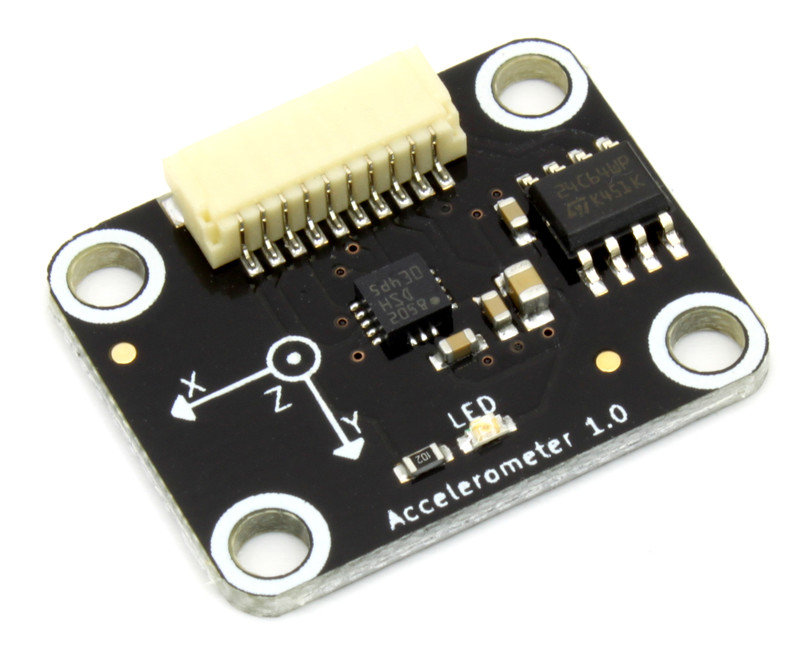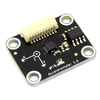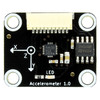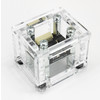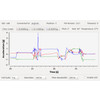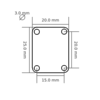- Getting Started
- Hardware
- Bricks
- Bricklets
- Master Extensions
- Power Supplies
- Discontinued Products
- Bricks
- Bricklets
- Accelerometer Bricklet
- Ambient Light Bricklet
- Ambient Light Bricklet 2.0
- Analog In Bricklet
- Analog In Bricklet 2.0
- Analog Out Bricklet
- CO2 Bricklet
- Current12 Bricklet
- Current25 Bricklet
- Distance US Bricklet
- Dual Button Bricklet
- Dual Relay Bricklet
- GPS Bricklet
- Humidity Bricklet
- Industrial Analog Out Bricklet
- Industrial Digital In 4 Bricklet
- Industrial Dual Analog In Bricklet
- Industrial Quad Relay Bricklet
- IO-4 Bricklet
- Laser Range Finder Bricklet
- LCD 16x2 Bricklet
- LED Strip Bricklet
- Load Cell Bricklet
- Moisture Bricklet
- Motion Detector Bricklet
- NFC/RFID Bricklet
- OLED 128x64 Bricklet
- Piezo Buzzer Bricklet
- PTC Bricklet
- PTC Bricklet 2.0
- Remote Switch Bricklet
- RGB LED Bricklet
- RGB LED Matrix Bricklet
- Rotary Encoder Bricklet
- Solid State Relay Bricklet
- Temperature IR Bricklet
- Thermocouple Bricklet
- UV Light Bricklet
- Voltage Bricklet
- Voltage/Current Bricklet
- Master Extensions
- Timeline
- Software
- Kits
- Embedded Boards
- Specifications
Accelerometer Bricklet¶
Note
The Accelerometer Bricklet is discontinued and is no longer sold. The Accelerometer Bricklet 2.0 is the recommended replacement.
Features¶
- 3-axis accelerometer
- 0.001g steps with 16bit resolution
- Up to ±16g full-scale range
- Full 1kHz data rate with callbacks
Description¶
The Accelerometer Bricklet can be used to extend the features of Bricks with the capability to measure acceleration in x-, y- and z-axis. The measured acceleration can be read out in g. With configurable events it is possible to react on changing acceleration without polling.
The Bricklet has an LED that can be turned on trough the API, e.g. to show that a specific acceleration was reached.
Technical Specifications¶
| Property | Value |
|---|---|
| Sensor | LIS3DSH |
| Current Consumption | 5mW (1mA at 5V) |
| Acceleration | 0.001g steps, 16bit resolution |
| Shock survivability | 10000g |
| Full-scale range | ±2g / ±4g / ±6g / ±8g / ±16g selectable with API |
| Dimensions (W x D x H) | 25 x 20 x 5mm (0.98 x 0.79 x 0.19") |
| Weight | 2g |
Resources¶
Test your Accelerometer Bricklet¶
To test a Accelerometer Bricklet you need to have Brick Daemon and Brick Viewer installed. Brick Daemon acts as a proxy between the USB interface of the Bricks and the API bindings. Brick Viewer connects to Brick Daemon. It helps to figure out basic information about the connected Bricks and Bricklets and allows to test them.
Connect the Accelerometer Bricklet to a Brick with a Bricklet Cable.
If you connect the Brick to the PC over USB, you should see a new tab named "Accelerometer Bricklet" in the Brick Viewer after a moment. Select this tab. If everything went as expected you can now see the acceleration in g, pitch and roll and a graph that shows the acceleration over time.
Point the Bricklet downwards along its x-, y- and z-axis one by one. The acceleration should be around 1g for the axis pointing downwards and around 0g for the other axes.
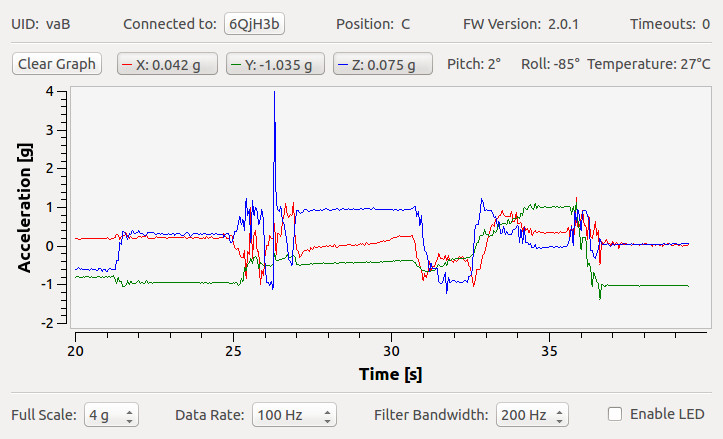
After this test you can go on with writing your own application. See the Programming Interface section for the API of the Accelerometer Bricklet and examples in different programming languages.
Case¶
A laser-cut case for the Accelerometer Bricklet is available.
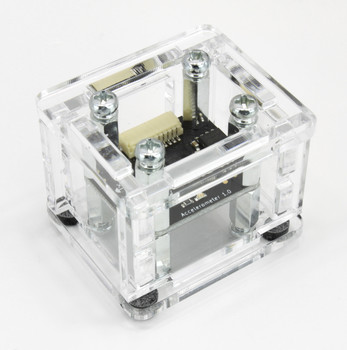
The assembly is easiest if you follow the following steps:
- Screw spacers to the Bricklet,
- screw bottom plate to bottom spacers,
- build up side plates,
- plug side plates into bottom plate and
- screw top plate to top spacers.
Below you can see an exploded assembly drawing of the Accelerometer Bricklet case:
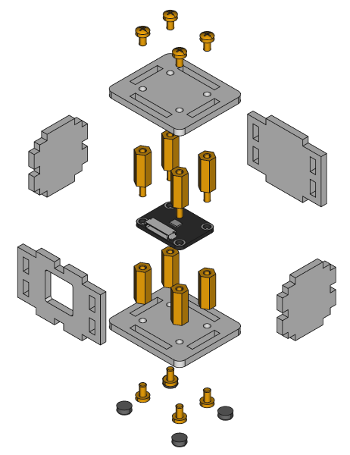
Hint: There is a protective film on both sides of the plates, you have to remove it before assembly.
Programming Interface¶
See Programming Interface for a detailed description.
| Language | API | Examples | Installation |
|---|---|---|---|
| C/C++ | API | Examples | Installation |
| C# | API | Examples | Installation |
| Delphi/Lazarus | API | Examples | Installation |
| Go | API | Examples | Installation |
| Java | API | Examples | Installation |
| JavaScript | API | Examples | Installation |
| LabVIEW | API | Examples | Installation |
| Mathematica | API | Examples | Installation |
| MATLAB/Octave | API | Examples | Installation |
| MQTT | API | Examples | Installation |
| openHAB | API | Examples | Installation |
| Perl | API | Examples | Installation |
| PHP | API | Examples | Installation |
| Python | API | Examples | Installation |
| Ruby | API | Examples | Installation |
| Rust | API | Examples | Installation |
| Shell | API | Examples | Installation |
| Visual Basic .NET | API | Examples | Installation |
| TCP/IP | API | ||
| Modbus | API |


